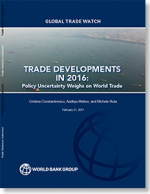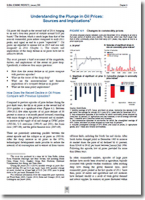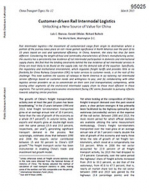Understanding the Plunge in Oil Prices: Sources and Implications
The decline in oil prices has significant macroeconomic, financial and policy implications, and if sustained, it will support activity and reduce inflationary, external, and fiscal pressures in oil-importing countries.
Oil prices fell sharply in the second half of 2014, bringing to an end a four-year period of stability around $105 per barrel.
The decline, which is much larger than that of the non-oil commodity price indices compared to early-2011 peaks, may signal an end to a price “supercycle”.3 Oil prices are expected to remain low in 2015 and rise only marginally in 2016 (Chapter 1).
The sources and implications of the sharp decline in oil prices have led to intensive debate.
This essay presents a brief assessment of the magnitude, drivers, and implications of the recent oil price drop.
Specifically, it addresses four major questions:
- How does the recent decline in oil prices compare with previous episodes?
- What are the causes of the sharp drop?
- What are the macroeconomic and financial implications of a sustained decline in oil prices?
- What are the main policy implications?
How Does the Recent Decline in Oil Prices Compare with Previous Episodes?
Compared to previous episodes of price declines during the past thirty years, the fall in oil prices in the second half of 2014 qualifies as a significant event (Figure 4.1).
Between 1984-2013, five other episodes of oil price declines of 30 percent or more in a six-month period occurred, coinciding with major changes in the global economy and oil markets: an increase in the supply of oil and change in OPEC policy (1985-86); U.S. recessions (1990–91 and 2001); the Asian crisis (1997–98); and the global financial crisis (2007–09).
There are particularly interesting parallels between the recent episode and the collapse in oil prices in 1985-86.
After the sharp increase in oil prices in the 1970s, technological developments made possible to reduce the intensity of oil consumption and to extract oil from various offshore fields, including the North Sea and Alaska. After Saudi Arabia changed policy in December 1985 to increase its market share, the price of oil declined by 61 percent, from $24.68 to $9.62 per barrel between January-July 1986.
Following this episode, low oil prices prevailed for more than fifteen years.
In other commodity markets, episodes of large price declines have mostly been observed in agriculture, typically associated with specific weather conditions. After reaching deep lows during the global financial crisis, most commodity prices peaked in the first quarter of 2011. Since then, prices of metals and agricultural and raw materials have declined steadily as a result of weak global demand and robust supplies. In contrast, oil prices fluctuated within a narrow band around $105/barrel (bbl) until June 2014.
Softness in the global economy was offset by concerns about geopolitical risks, supply disruptions, and production controls exercised by OPEC (led by Saudi Arabia, its largest oil producer). The last factor in part reflected the willingness of Saudi Arabia and other low-cost producers to withhold output in support of OPEC price objectives. The steep decline in the second half of 2014 intensified after a change in policy at the OPEC meeting in late November.
By the end of 2014, the cumulative fall in oil prices from the 2011 peak was much larger than that in non-oil commodity price indices.
What’s Related




Favorites





